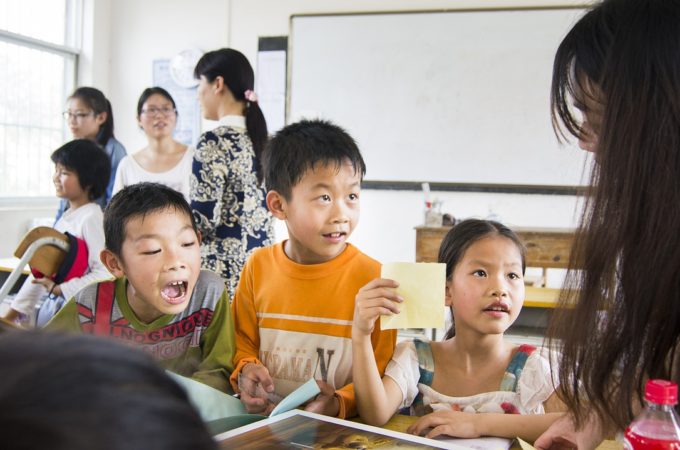“Good.” “Fine.” These are probably the most frequent responses parents hear about a child’s school day. As a group, parents are understandably curious and eager to find out exactly what happened during their child’s day, from the moment they were dropped off until the moment they are picked up. Most would love a step-by-step breakdown or detailed account of the day. What did they play? Did they have fun? What did they learn? Who did they play with at recess? Let’s break down how we can help children share this information with us in an engaging and playful way.
Where do we start?
How adults begin this conversation can set the tone for the rest of the discussion. How was your day? Is a great question – but let’s consider the breadth of the question. Which part of the day are we talking about? Recess? Snack? Gym? Reading time? A lot happens in a child’s day! A simple “How was your day?” is so broad and all-encompassing that we would be a bit overwhelmed trying to figure out how to respond too.
Finding a jumping-off point.
Finding a place to start a conversation is an art and requires a bit of detective work. The easiest way, is to start talking about a topic that your child is excited about. This might be their favourite time of the day (e.g. recess, science, math or art) or their close “friend of the week”. By tailoring the conversation-starter around their interests, you are :
- more likely to hear an honest and detailed account of their day, rather than receiving a generic “My day was good” or “I didn’t do anything” answer
- personalizing the conversation to your child and showing an interest in their world and preferences, which helps support their self-esteem and social emotional development
- modeling good conservation skills by helping them zero in on a specific topic and giving the conversation direction
For older children, asking “What was the funniest thing that happened in school today?” might be a great conversation starter for a child who has a great sense of humour and enjoys sharing these stories.
Here are some other examples of questions that we have used to help jump start conversations:
For a child who is interested in art we might ask:
- What colour did you choose to draw with during art today?
- What did you draw?
- Wow, I like elephants! What was your elephant doing in the drawing?
For a child who has been having trouble with peers in the class we might ask:
- Who would you like to sit next to during snack or lunch?
- I hear that (s)he likes to play soccer at recess. Who else plays soccer?
- What did (s)he want to play with during free time?
Because it might be harder for young children to recall the events from their day, using something concrete such a photograph from their classroom, the school/classroom newsletter, or a piece of work they brought home can help to “spark” a conversation. (This strategy is really helpful to use with older children who have language delays too!)
We’ve been talking about questions to ask your child but we also want to highlight that we as adultsshould not rely solely on questions during the conversation. Too many questions could make the child feel pressured or stressed. We want to keep the conversation light by using statements and comments in addition to questions.
- “Wow that sounds like so much fun!”
- “I like drawing lions with big teeth!”
- “I liked playing on the slide when I was your age.”
- “You used so many beautiful colours in your painting. My favorite colour is this blue one.” etc.
Keeping a balance of questions and comments helps to develop your child’s confidence, making them feel like an active participant in the conversation and it is also important for development of conversation skills.
We encourage you to try some of the ideas we’ve suggested above and let us know how the conversation unfolds!
—
Eunice & Amanda



